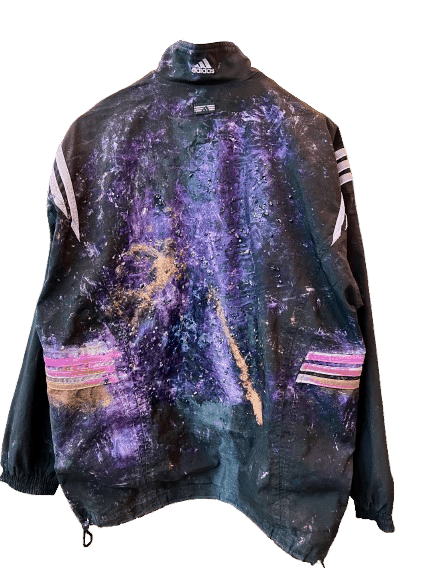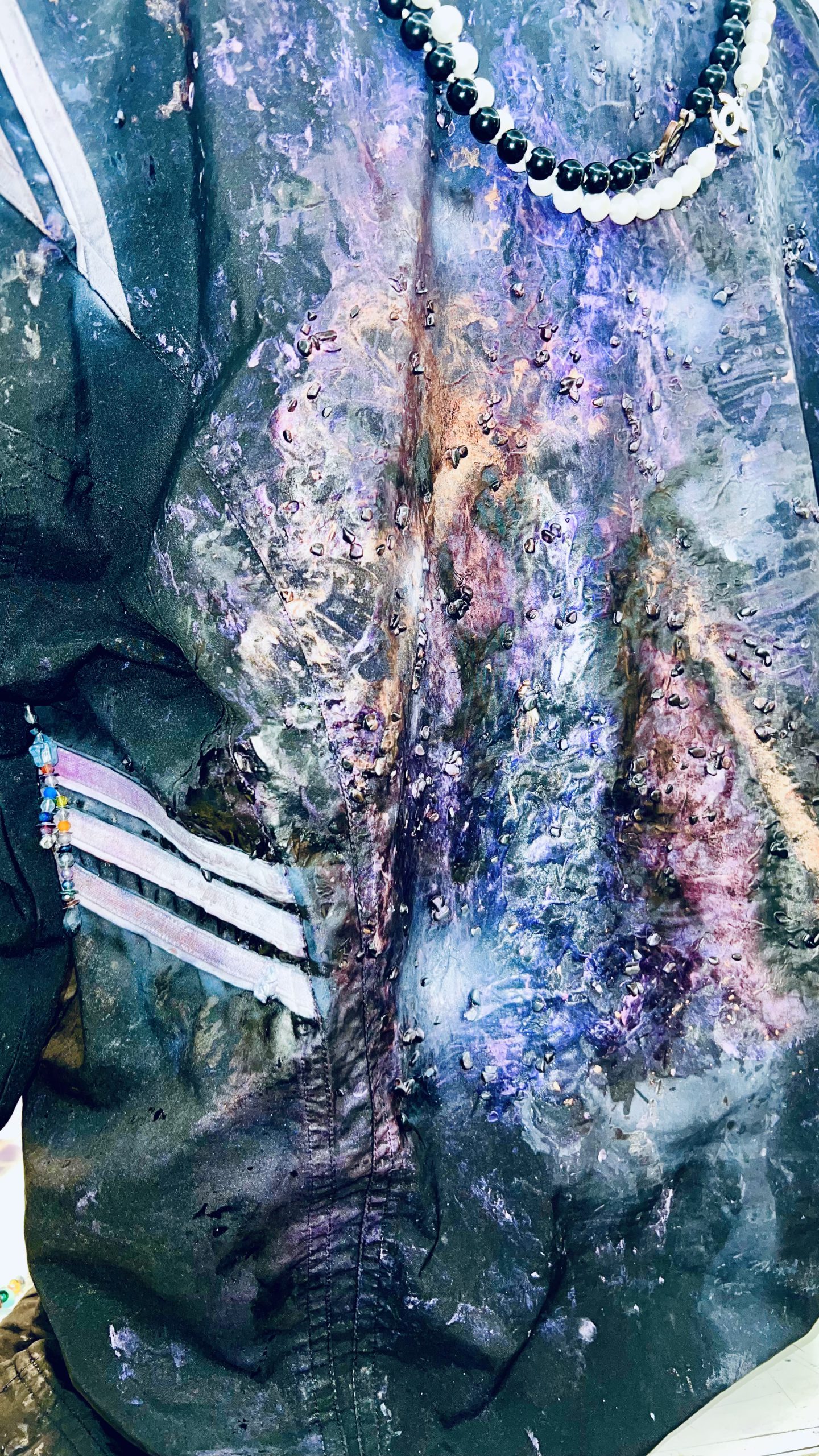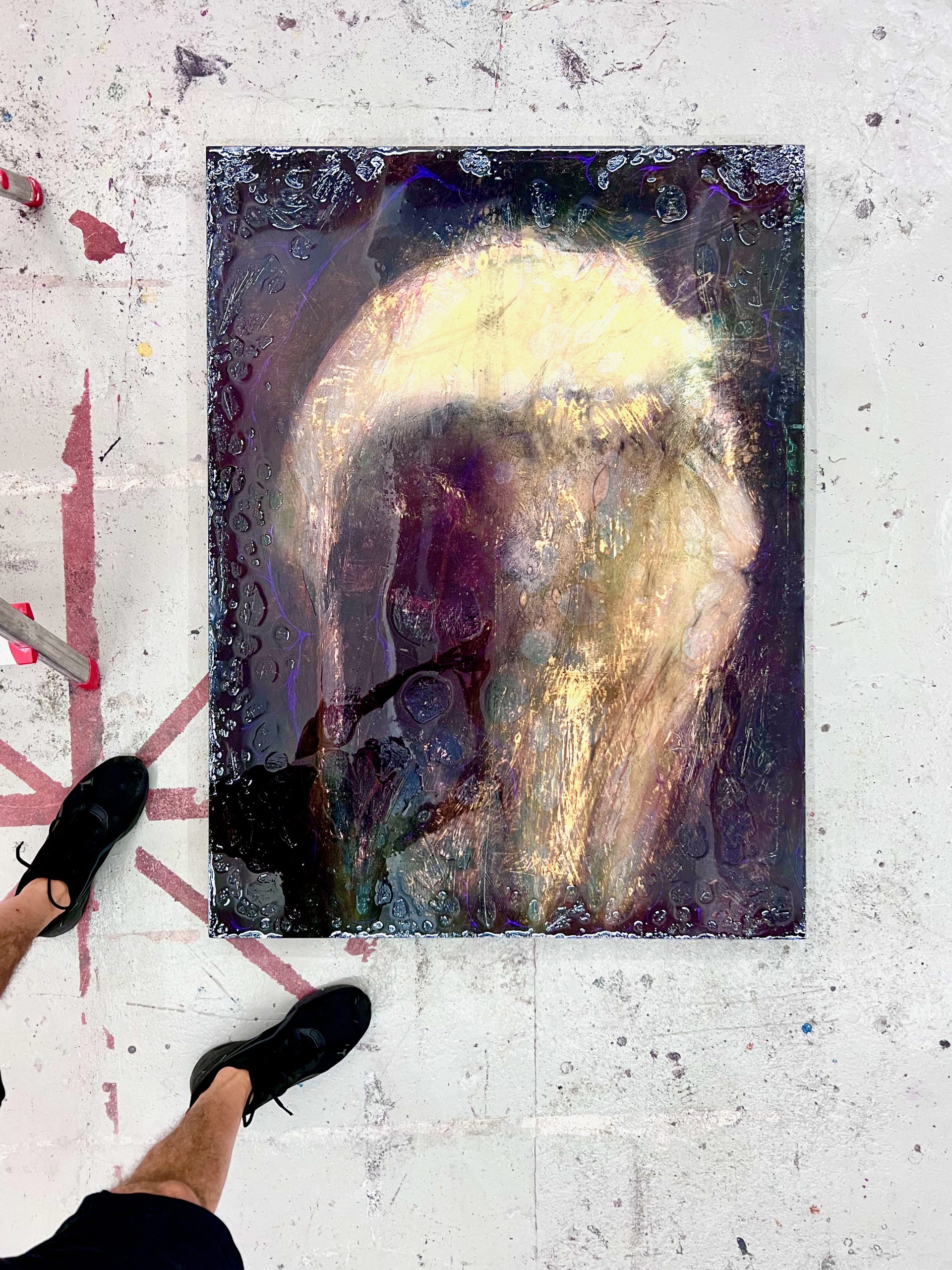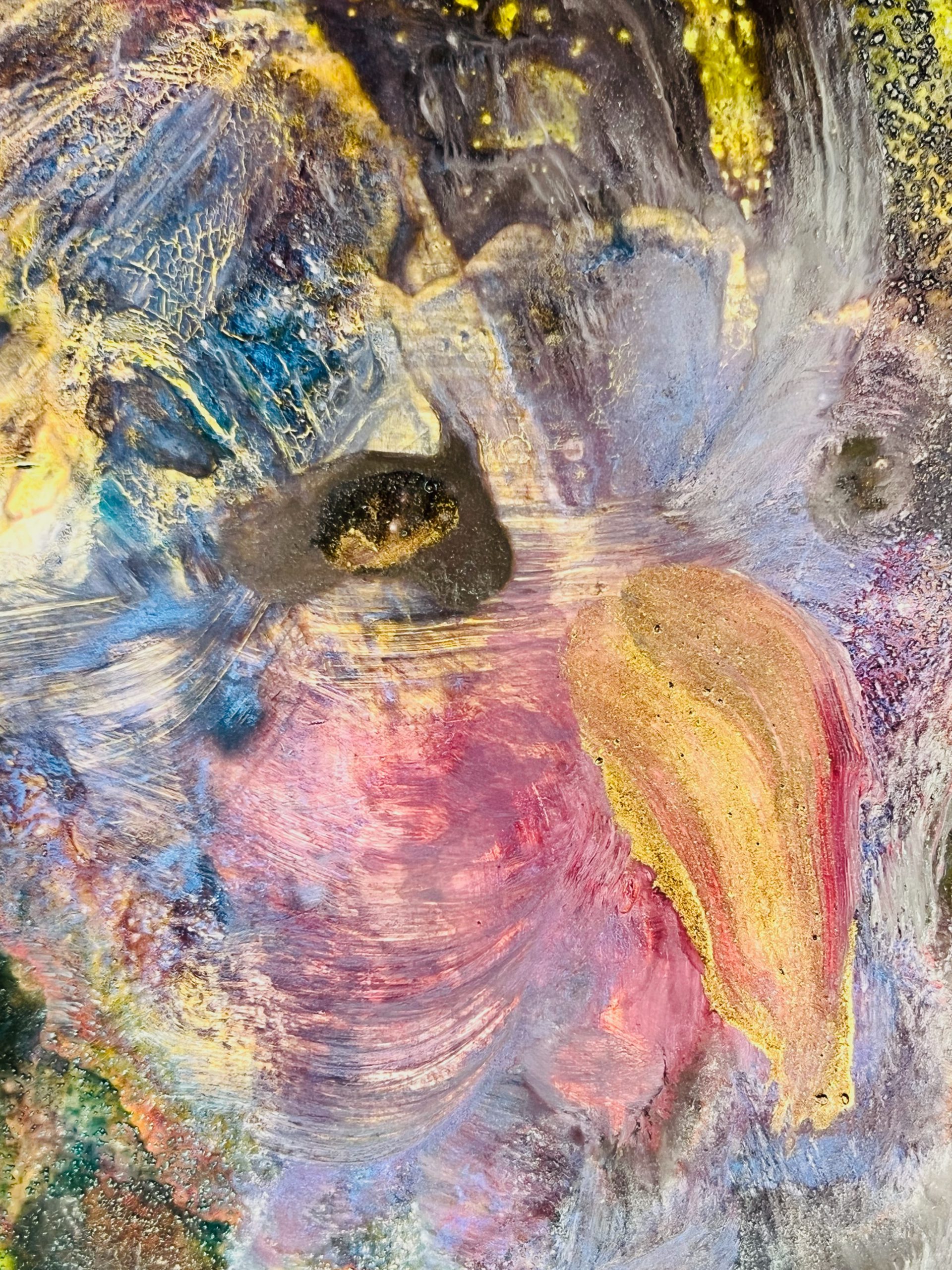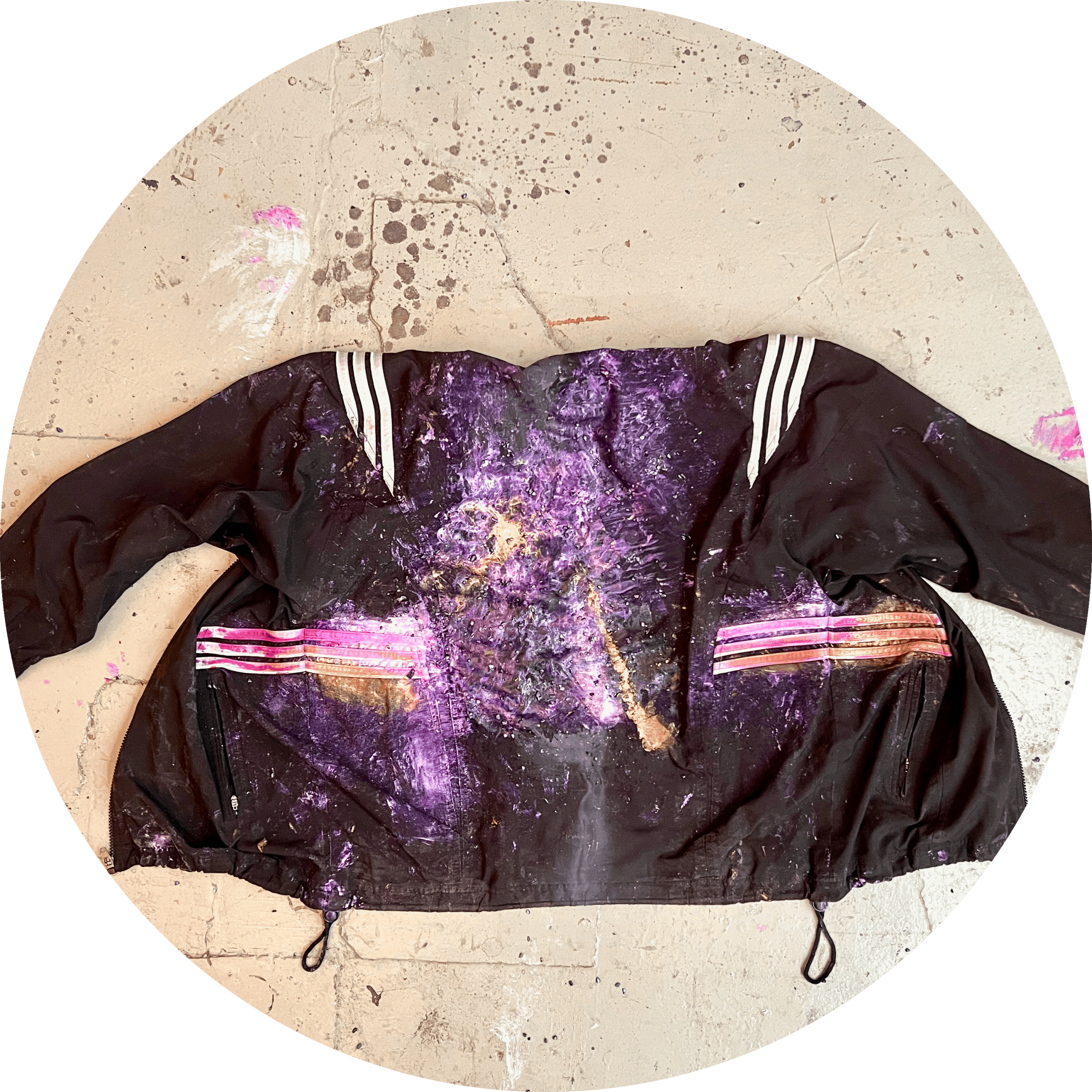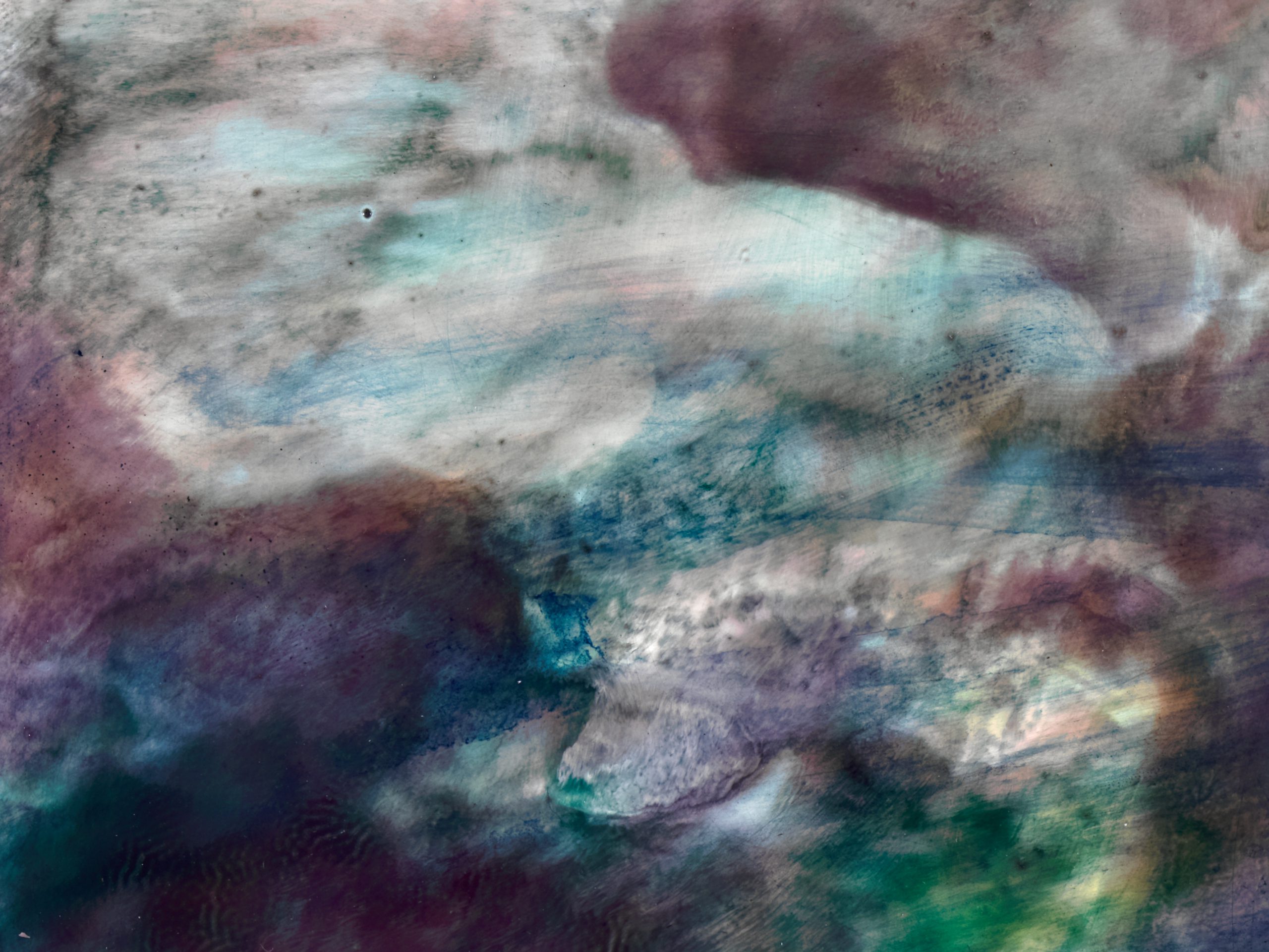Exploring the Interactions Between Matter and Light – The Multimedia Practice of Robert Lanz
Robert Lanz studied Fine Arts at the Berlin University of the Arts (UdK) under Professor Leiko Ikemura. In 2013, he was awarded the postgraduate title of Meisterschüler with distinction – the highest artistic qualification granted within Germany’s free art education system. Internationally, this corresponds to a Master of Fine Arts (MFA), signifying an advanced, research-based, experimental practice at a professional level.
Lanz lives and works in Berlin. His artistic practice operates at the intersection of painting, sculpture, material research, and conceptual inquiry. At its core lies an investigation of physical, chemical, and aesthetic processes – especially those that reveal the relationship between light, matter, and time. His works emerge from a dynamic tension between intuition and analysis, organic transformation and precise control.
Material Processes as a Mode of Thinking
Lanz works with raw substances, metal particles, pigments, resins, and both natural and synthetic binders. His processes follow no predetermined blueprint but unfold in situ, responding to temperature, humidity, gravity, and time. It is a mode of thinking through material.
The resulting surfaces evoke friction and resonance – reminiscent of geological strata, celestial movements, or microscopic cellular structures. Variations in metal content create shifting color gradients – fleeting appearances that seem stable only in the moment of observation.
Serial Formats and Fragmentary Strategies
Much of Lanz’s work is created in series – sometimes hundreds of works on paper – while others take the form of unique pieces or sculptural objects. These series do not aim for repetition but function as experimental arrangements: each piece a variation, a stage, a moment in the process.
Ephemeral formats are central to his practice as well: performative acts of destruction, fragmented editions, sealed objects, and digital transformations (including NFTs). Some works are shredded, atomized, or digitally translated – re-emerging as coded fragments, suspended between material and concept.
Concepts Between Rationality and Ritual
Lanz approaches his artistic practice as an expanded experiment – one that spans science, symbolism, and existential reflection. Rituals, astrology, esoteric systems, and occult materials appear not as decorative motifs but as counter-models to Western rationality – as alternative tools for reading the world.
This is reflected in artifacts such as Tsantsa Nova – transformed shrunken heads made of coconut shell, steel wool, pigment, glitter, and gemstones. These works interweave colonial violence, spiritual transformation, and contemporary aesthetics. Again, interaction is at the core: between cultural projection and material presence, between visibility and concealment.
Aesthetic Philosophy of Becoming
Lanz’s practice is guided by a philosophy of permeability: everything is process, everything is interaction. Substances intermingle, meanings dissolve and reassemble. His works pose not only aesthetic questions but existential ones: What remains when form dissolves? How can transformation be made visible without fixing it in place?
Here, art becomes a space of resonance – for fragility, transformation, and the continuous flow of things. Lanz creates visual environments in which the human condition is reflected through material presence – as trace, imprint, or potential.
Erforschung der Wechselwirkungen zwischen Materie und Licht: Die Multimedia-Praxis von Robert Lanz
Robert Lanz studierte Bildende Kunst an der Universität der Künste Berlin (UdK) bei Professorin Leiko Ikemura. 2013 wurde er mit dem postgradualen Meisterschüler-Titel mit Auszeichnung geehrt – der höchsten künstlerischen Qualifikation im freien Kunststudium an deutschen Kunsthochschulen. International entspricht dieser Abschluss einem Master of Fine Arts (MFA) und steht für eine experimentelle, forschungsbasierte Praxis auf professionellem Niveau.
Heute lebt und arbeitet Lanz in Berlin. Seine künstlerische Arbeit bewegt sich an der Schnittstelle von Malerei, Skulptur, Materialforschung und konzeptueller Praxis. Im Zentrum steht die Erkundung physikalischer, chemischer und ästhetischer Prozesse – insbesondere solcher, die das Verhältnis von Licht, Materie und Zeit sichtbar machen. Seine Werke entstehen im Spannungsfeld von Intuition und Analyse, organischem Wandel und präziser Kontrolle.
Materialprozesse als Denkform
Lanz arbeitet mit Rohsubstanzen, Metallpartikeln, Pigmenten, Harzen sowie natürlichen und synthetischen Bindemitteln. Seine Werke folgen keinem festen Entwurf, sondern entstehen in situ – als Reaktion auf Temperatur, Luftfeuchtigkeit, Gravitation und Zeit. Es ist ein Denken mit dem Material, das auf physikalische Bedingungen ebenso reagiert wie auf ästhetische Intuition.
Die entstehenden Oberflächen erzählen von Reibung und Resonanz, erinnern an geologische Formationen, astronomische Bewegungen oder mikroskopische Zellstrukturen. Schwankungen im Metallgehalt erzeugen flüchtige Farbverläufe – Erscheinungen, die im Moment ihrer Betrachtung eine kurzzeitige Stabilität gewinnen.
Serielle Formate und fragmentarische Strategien
Ein großer Teil von Lanz’ Werk entsteht in Serien – teils hunderte Arbeiten auf Papier – andere Arbeiten wiederum sind Einzelstücke oder skulpturale Objekte. Serien dienen dabei nicht der Wiederholung, sondern als Versuchsanordnung: Jede Arbeit markiert ein Stadium, ein Fragment, einen Augenblick im fortlaufenden Prozess.
Hinzu kommen ephemere und transformative Formate: Performative Zerstörungen, fragmentierte Editionen, versiegelte Objekte und digitale Artefakte (z. B. NFTs). Manche Werke werden geschreddert, zerstäubt oder digital überführt – sie erhalten als codierte Fragmente ein zweites Leben im Zwischenraum von Materie und Konzept.
Konzepte zwischen Rationalität und Ritual
Lanz versteht seine Kunst als erweitertes Experiment – zwischen Wissenschaft, Symbolsystemen und existenzieller Reflexion. Rituale, Astrologie, Esoterik und okkulte Materialien tauchen nicht als dekorative Elemente auf, sondern als Gegenmodelle zur westlich geprägten Rationalität. Sie fungieren als Werkzeuge zur alternativen Weltlektüre.
So entstehen Artefakte wie Tsantsa Nova – transformierte Schrumpfköpfe aus Kokosnuss, Stahlwolle, Pigment, Glitzer und Edelsteinen. Diese Objekte verknüpfen koloniale Gewalt, spirituelle Transformation und zeitgenössische Ästhetik. Auch hier steht der Austausch im Fokus: zwischen kultureller Projektion und materieller Präsenz, zwischen Sichtbarem und Unsichtbarem.
Ästhetische Philosophie des Werdens
Die künstlerische Praxis von Lanz ist geprägt von einer Philosophie der Durchlässigkeit: Alles befindet sich im Wandel. Substanzen durchdringen einander, Bedeutungen zerfallen und verdichten sich neu. Seine Werke stellen nicht nur ästhetische Fragen, sondern auch existenzielle: Was bleibt, wenn sich Form auflöst? Wie lässt sich Veränderung zeigen, ohne sie zu fixieren?
Kunst wird hier zum Resonanzraum für Fragilität, Transformation und das stetige Fließen der Dinge. Lanz schafft Bildräume, in denen sich das Menschliche im Materiellen spiegelt – als Spur, Abdruck oder Möglichkeit.
